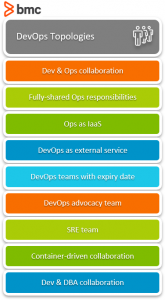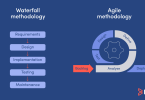The impact that the COVID-19 pandemic has had on businesses and people is still being understood, its effects still rippling out for years to come. From more remote workers to supply chain challenges no one saw coming, this past year has forced more innovation and creativity than ever.
One huge takeaway—for IT leaders and everyone else—is how technology has played a crucial role in people’s ability to continue to work, learn, receive services, and socialize.
For a majority of companies, IT has shifted from that which helps to get business done to a mission-critical role. Developers and DevOps professionals are now suddenly in a world of opportunity, with a renewed focus on frequent improvements and new innovations alike. With this eye on the future, we have put together some of the top DevOps trends for 2022.
(This article is part of our DevOps Guide. Use the right-hand menu to navigate.)

DevOps predictions for 2022
Based on current trends and future predictions, here’s what we can expect to see in the world of DevOps in 2022.
Continued cloud adoption
Even before the changes that came about as a result of the pandemic, most enterprises were already making moves to adopt a more cloud-centric infrastructure to support cloud-based workflows and applications. Given the pressing need for the industry to adapt and adjust, this shift has had to happen even faster than originally planned.
Simply using the cloud will not make a company highly evolved, however. According to the recently released Puppet 2021 State of DevOps report, a majority of DevOps teams are using the cloud, but most of them are using it poorly. Results show that:
- 65% of what are considered mid-evolution organizations report using the public cloud.
- Yet only 20% of them are using it to its full potential.
For those looking to improve their cloud adoptions, considering different types of clouds could be beneficial. Results from the 2021 Accelerate State of DevOps survey found that teams who used hybrid or multi-cloud software deployments were 1.6 times more likely to meet their organizational performance targets than those who used more traditional cloud strategies.
(Read more about the State of DevOps.)
Automation
Automation is nothing new to the DevOps community, but being good at automation does not mean that an organization is good at DevOps.
According to the Puppet 2021 State of DevOps report, highly evolved firms are far more likely to have implemented extensive automation, with 90% of respondents with highly evolved DevOps practices reporting that their teams have automated most of their repetitive tasks.
For organizations that are not considered highly evolved, these initiatives will only continue to have more urgency in their adoption. In order to make this happen, teams must not work only to automate the entire pipeline—they must also be willing to integrate AI and ML.
Applying ML to the delivery lifecycle will allow organizations to understand where blockages or capacity issues occur. Armed with this knowledge, problems can be better mitigated when they arise. AI-based predictive analytics can make the DevOps pipeline smarter in two key ways:
- Anticipating problems
- Providing potential solutions
Prioritizing security
With a majority of employees working from home this past year, and many potentially into the future, organizations are beginning to realize that having a secure software supply chain is no longer an option—it’s a necessity. And this security cannot simply be added on as an afterthought. Rather, we must inject security into every layer as secure code, ensuring that any vulnerabilities are quickly detected and mitigated.
DevOps engineers must adapt and change the way they are writing software, ensuring that it is secure not only as it is written, but as it is deployed, as well. Some ways to begin prioritizing security for DevOps include:
- Understanding security goals
- Having proper cloud vulnerability scanners
- Securing code with standard tests
(Explore DevSecOps, an emerging practice that embraces security.)
SRE & DevOps
According to findings from Google Cloud’s 2021 Accelerate State of DevOps Report, Site Reliability Engineering (SRE) and DevOps will continue to grow more complementary in years to come, with certain SRE techniques, like service-level indicators, providing practices that can enhance objectives of the DevOps team.
“Teams that prioritize both delivery and operational excellence report the highest organizational performance,” said Dustin Smith, research lead for Google Cloud’s DORA team
Evidence from the survey indicates that teams who excel at modern operational practices are 1.4 times more likely to report greater software delivery and operational performance compared to those who are less mature with operational practices. These teams are also 1.8 times more likely to report better business outcomes.
(Learn more about SRE.)
Hybrid by design
While some organizations have started migrating employees back into the office this past year, many have continued to allow a hybrid model, with workers either fully remote or at least with the option to continue to work from home. And one thing that’s becoming apparent is that many employees want the choice. In fact, the IDC report predicts that by 2023, 75% of G2000 companies will have created some type of hybrid structure.
“There was always this perception about, ‘Okay, the remote work, it’s a temporary thing. When the crisis is over, people will go back to the office’,” said Rick Villars, IDC’s Group Vice President for Worldwide Research.
“What we saw was that really the companies who were accelerating and doing well were ones who are inclined to completely change their model and recognize that giving their employees to work anywhere and in any environment, and work together anywhere as equals, as opposed to second-class citizens and first-class citizens, was going to be a key part of succeeding in the next phase.”
DevOps innovation continues
No matter what the future brings for workers and organizations, DevOps will continue to evolve and pivot, as it always does. Businesses will have an opportunity to use the current challenges as ways to push their limits, adopting innovative technologies and trusting their skilled workers. By embracing these top DevOps trends, professionals can ensure that DevOps remains in the spotlight for years to come.
BMC supports DevOps processes
At BMC, we encourage DevOps across the enterprise. See how our DevOps tools and solutions help your organization succeed.
Change risk management
In IT environments, broad organizational risk is a given. Making the most of DevOps requires reducing that risk.
Built-in artificial intelligence for IT operations (AIOps) and service management (AISM) capabilities help to manage risk without adding work to DevOps teams, so it’s easier to:
- Handle governance and hardening
- Automate change
- Quickly assess risk
Mainframe DevOps
Break the silo and include the mainframe environment in your DevOps ecosystem. Building a mainframe-inclusive DevOps toolchain enables agile development and testing of critical applications so you can deliver innovations faster.
Integrated modern mainframe tools work across an array of cross-platform tools, empowering developers of every stripe to perform and improve the processes necessary to fulfill each phase of the DevOps lifecycle:
- Shift-left automated testing
- Speed IBM® Db2® database changes
- Address security earlier in the dev process
Dependency mapping
A change to one application or system can ripple through the ecosystem and impact customer experience.
As agility increases and changes are made quickly, it’s critical to know all your assets—and how they’re used. Enlist dynamic service modeling to automatically map all application and infrastructure dependencies so you can:
- Assess the impact of change
- Ensure an optimal customer experience
- Support regulatory compliance
Workflow & production automation
The handoff of code from development to production can be a major stumbling block in the DevOps workflow. Application workflow orchestration can help by augmenting the traditional CI/CD toolchain.
A Jobs-as-Code approach with the CI/CD toolchain makes it easier to version, test, and maintain workflows so your teams can deliver better apps, faster.
- Enable shift-left best practices
- Give developers a familiar work environment
- Reduce rework
Related reading
- BMC DevOps Blog
- Software Project Management Phases & Best Practices
- Top DevOps Conferences
- Today’s Top Trends in Software Development
- How & Why To Become a Software Factory
- DevOps Salary Trends
These postings are my own and do not necessarily represent BMC's position, strategies, or opinion.
See an error or have a suggestion? Please let us know by emailing [email protected].





